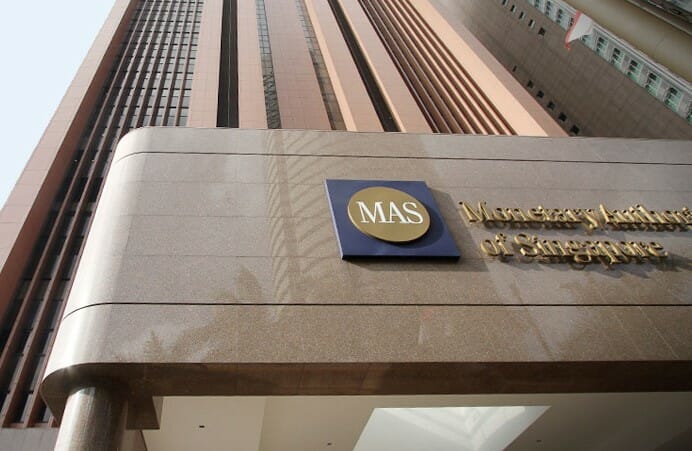The Monetary Authority of Singapore has assessed the country’s position and is of opinion that it is appropriate to further tighten its monetary policy stance so as to lean against price pressures which are becoming more persistent.
This is the fourth time since last October MAS had tightened. The adjustment falls outside its normal cycle of twice yearly monetary review. In October last year, MAS slightly increased the rate of appreciation of the Singapore dollar nominal effective exchange rate (S$NEER) policy band as a pre-emptive move in light of the pick-up in inflation. In January 2022, it added slightly to the rate of appreciation of the band. In the April 2022 Monetary Policy Statement, the authority re-centred upwards the S$NEER policy band and further increased its rate of appreciation.
This was in view of a fresh impulse to inflation arising from shocks to global commodity prices and supply chains in the wake of the Russia-Ukraine war. Over the last three months, the S$NEER has broadly appreciated within the upper half of the policy band. The three-month S$ Singapore Interbank Offered Rate (SIBOR) rose to 1.9% from 1.1% in April this year, while the three-month compounded Singapore Overnight Rate Average (SORA) increased to 1.0% from 0.3%.
Growth Backdrop and Outlook
Singapore’s GDP was unchanged on a quarter-on-quarter, seasonally-adjusted basis in Q2 2022, compared to the 0.9% expansion in Q1, according to the Advance Estimates released by the Ministry of Trade and Industry today. Growth in Q2 was weighed down by the external-facing sectors such as wholesale trade and manufacturing, while the sectors that bore the brunt of the pandemic generally benefited from the substantial easing of border and domestic mobility restrictions. On a year-ago basis, GDP grew by 4.8% in Q2 2022.
Slowing external growth momentum will weigh on Singapore’s trade-related sectors in the second half of the year. The domestic-oriented and travel-related sectors are, however, expected to continue their recovery and support economic expansion. Overall, GDP growth is projected to come in at the lower half of the 3–5% forecast range for 2022 as a whole.
Looking ahead to 2023, there are risks of a more significant slowdown in Singapore’s key trading partners as monetary policy tightening in response to elevated inflation dampens consumption and investment demand. In tandem with a weaker global economic environment, Singapore’s GDP growth is expected to moderate further in 2023.
Inflation Trends and Outlook
Since the last Monetary Policy Statement in April 2022, both external and domestic factors have exerted further pressure on inflation. MAS Core Inflation stepped up to an average of 3.4% year-on-year in April and May from 2.5% in Q1, reflecting stronger price increases in a broad range of goods and services. Non-cooked food inflation picked up due in part to sharply higher poultry prices, while retail goods, food services and transport inflation accelerated amid higher costs and a rebound in demand following the lifting of most COVID-related restrictions. Business cost pressures also continued to accumulate on the back of further increases in the prices of fuel and other imported inputs, as well as utilities and labour costs. In particular, the resident unemployment rate remained low and resident wage growth rose to 7.8% year-on-year in Q1. With domestic consumer spending robust, businesses passed on some of these accumulated costs to consumer prices.
Overall inflationary pressures will remain elevated in the months ahead. Although global supply chain frictions are easing, external inflationary impulses have become more broad-based, reflecting underlying constraints in global commodity and labour markets. Domestically, resilient private consumption expenditure, underpinned by the tight labour market, will lead to greater pass-through of cost pressures. Accordingly, MAS Core Inflation is projected to rise slightly above 4% in the near term, before easing towards the end of the year. However, there remain upside risks to inflation from fresh shocks to global commodity prices and domestic wage pressures.
MAS Core Inflation is now projected to be between 3.0–4.0% this year, up from the earlier forecast of 2.5–3.5%. As car and accommodation cost increases are also likely to remain firm, CPI-All Items inflation is expected to come in at 5.0–6.0%, higher than the earlier forecast range of 4.5–5.5%.
MONETARY POLICY
Since October 2021, MAS has been on a path of gradual monetary policy tightening in view of the rise in underlying inflation and steady economic recovery. In the near term, MAS Core Inflation is expected to rise above 4%. Although it should ease in Q4 2022, there is considerable uncertainty over the extent of the decline. At the same time, the Singapore economy remains on track to expand at a creditable pace in 2022, though with slowing momentum.
MAS assessed that, on balance, it would be prudent to take a further calibrated step to tighten monetary policy so as to lean against price pressures becoming more persistent.
Accordingly, MAS said it will re-centre the mid-point of the S$NEER policy band up to its prevailing level and that there will be no change to the slope and width of the band. This policy move it added, builds on previous tightening moves, which should help slow the momentum of inflation and ensure medium-term price stability.









